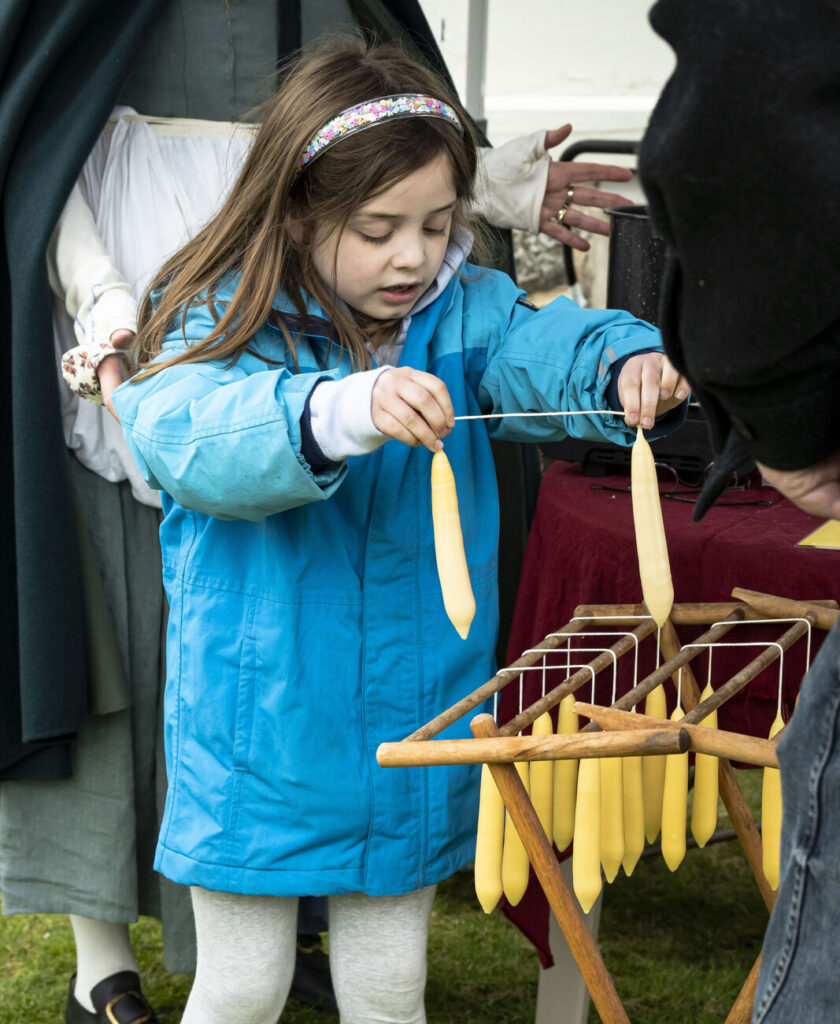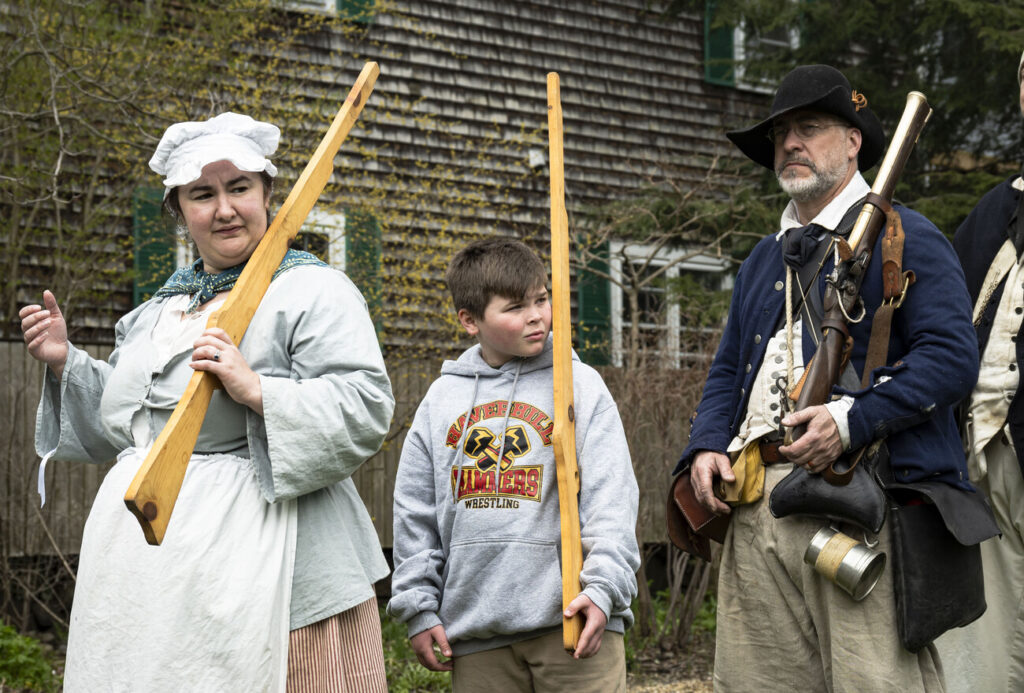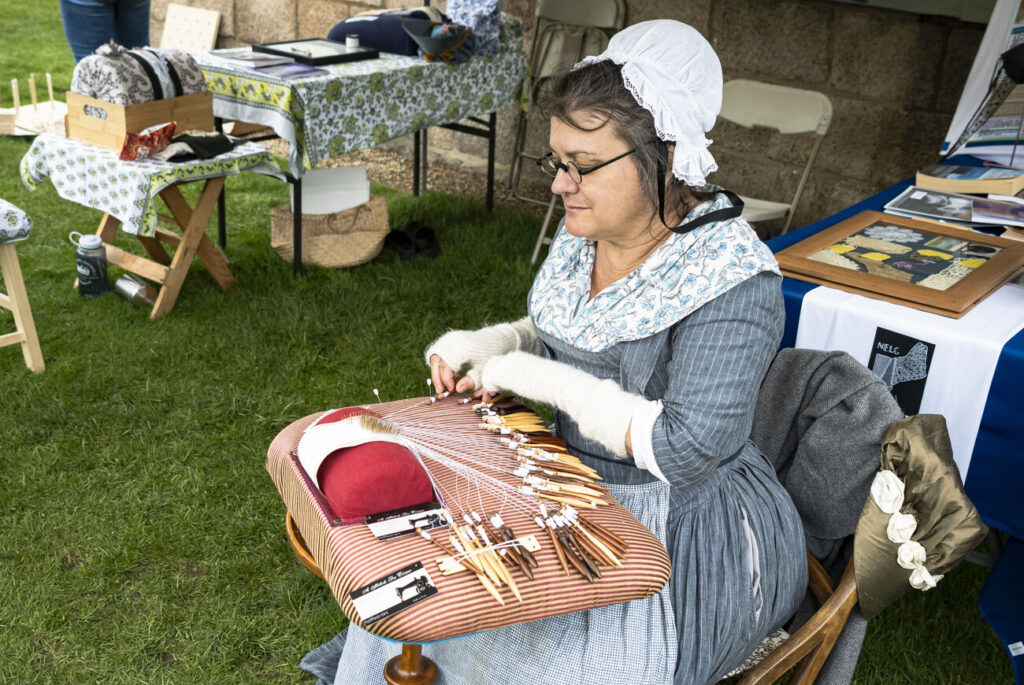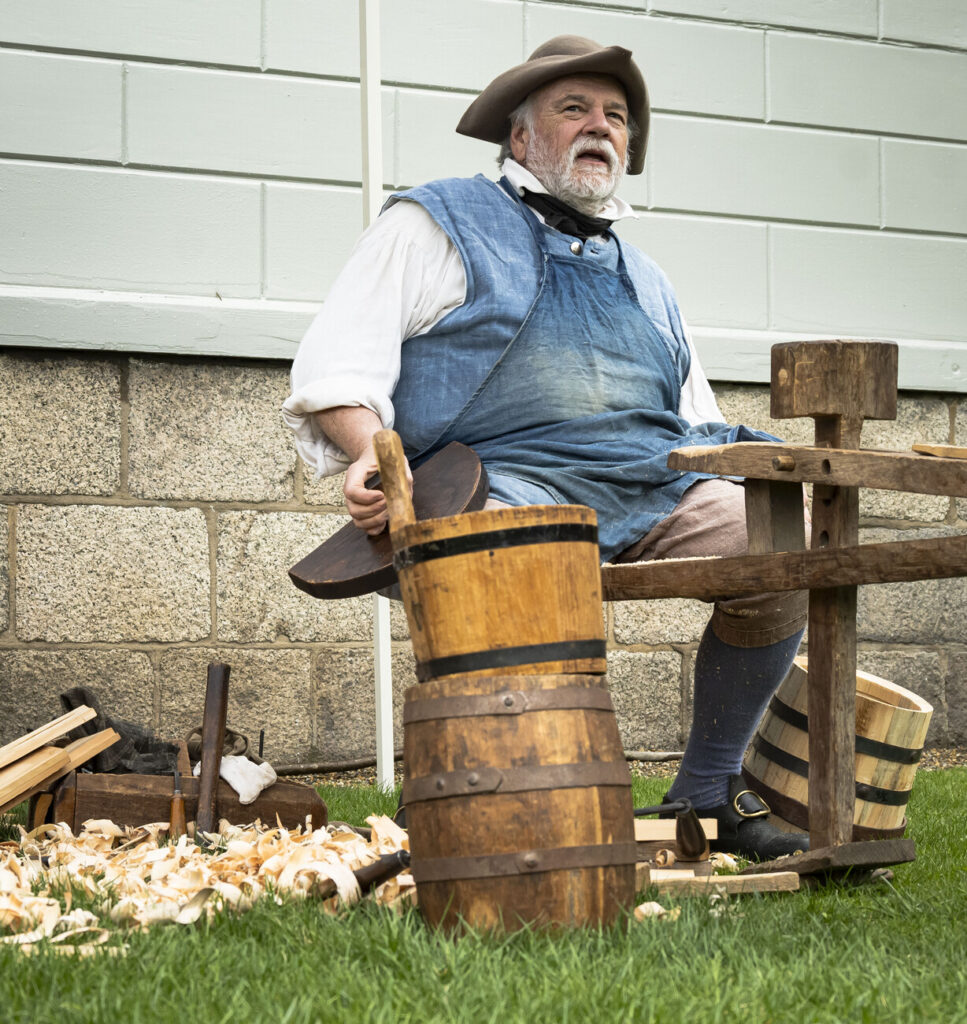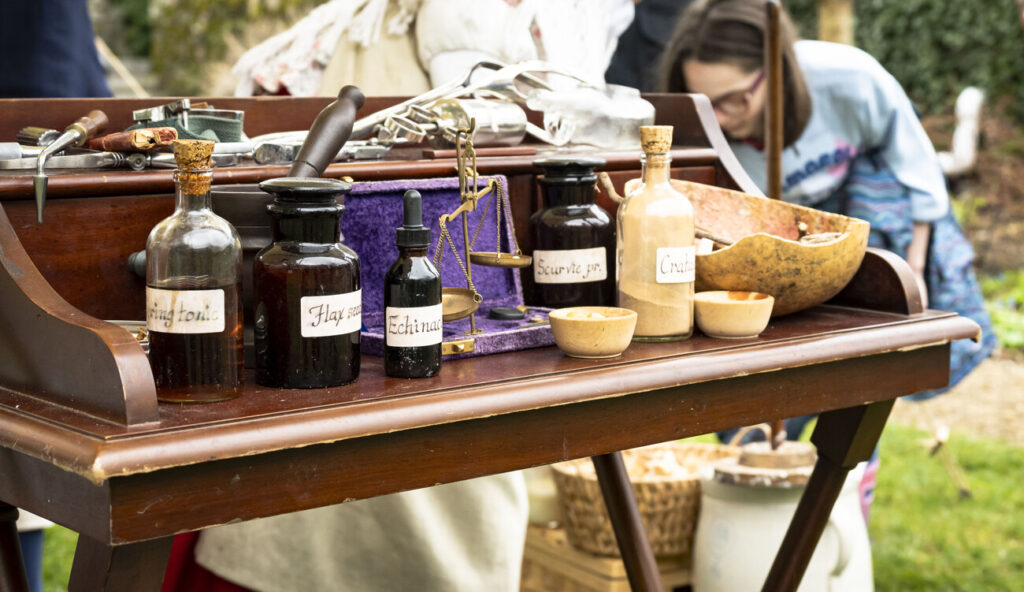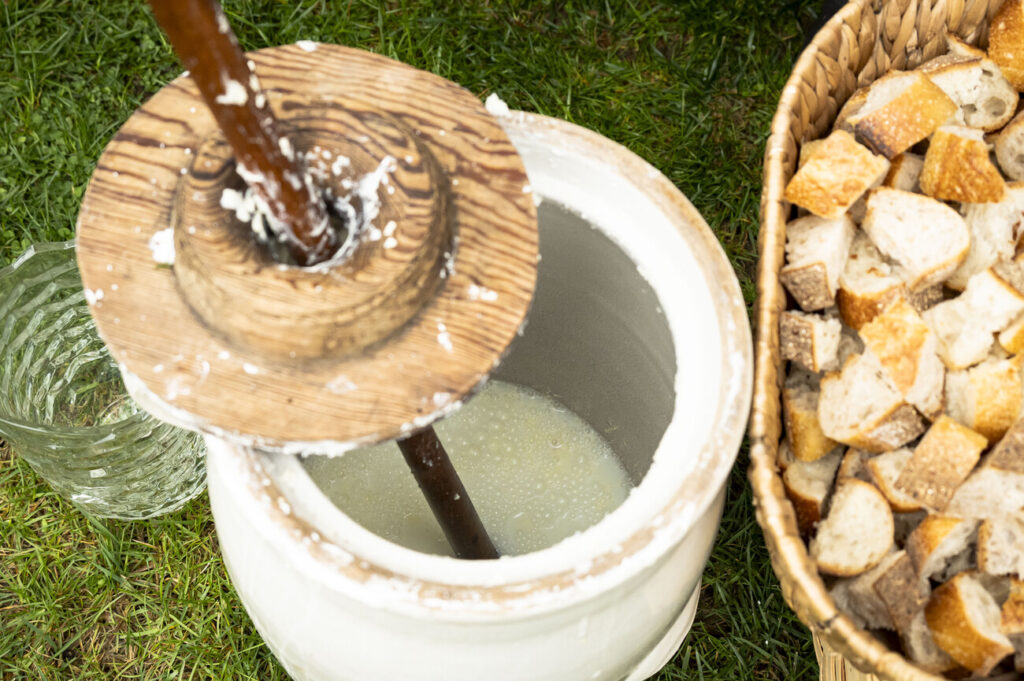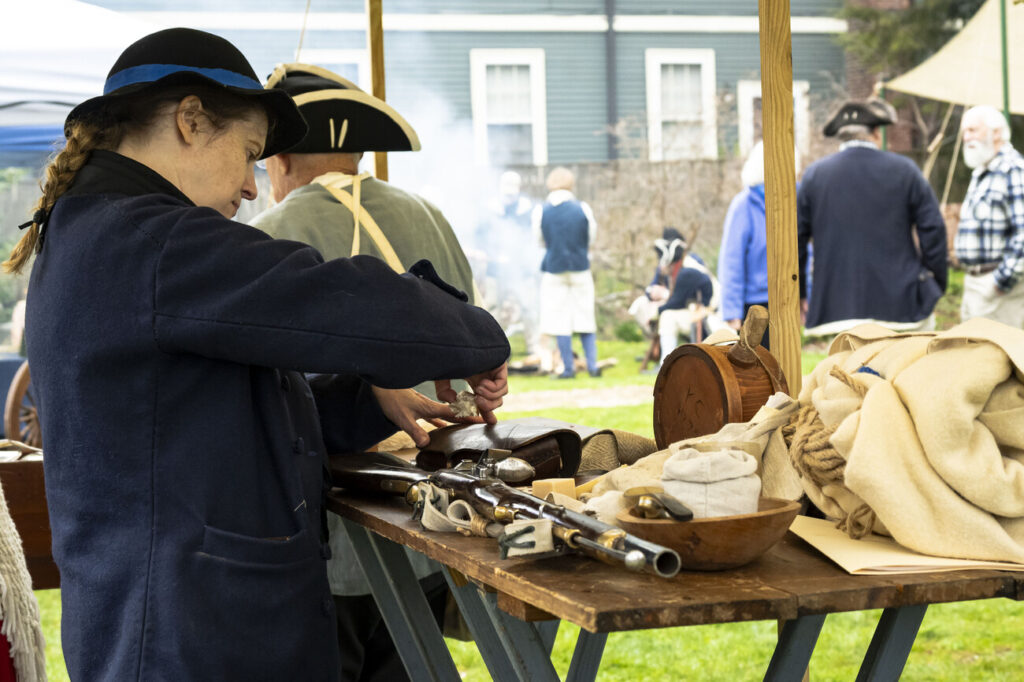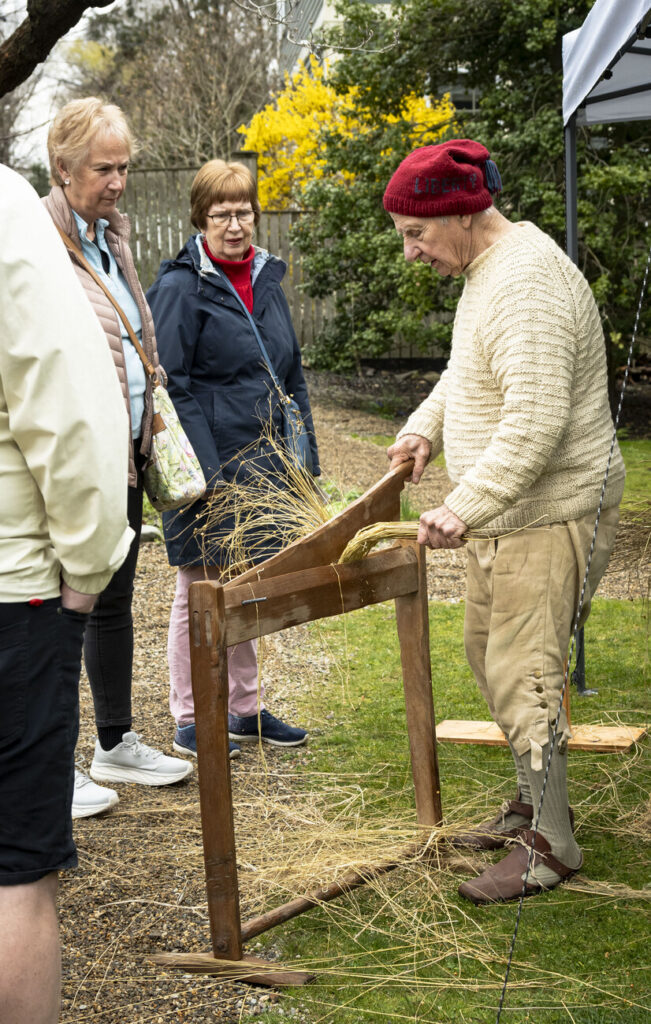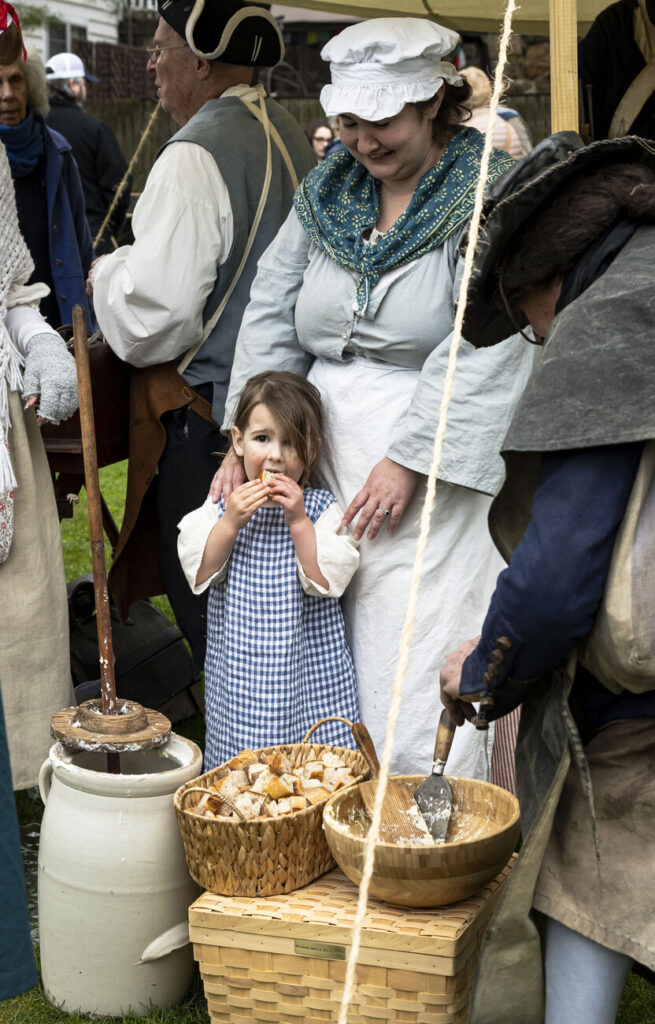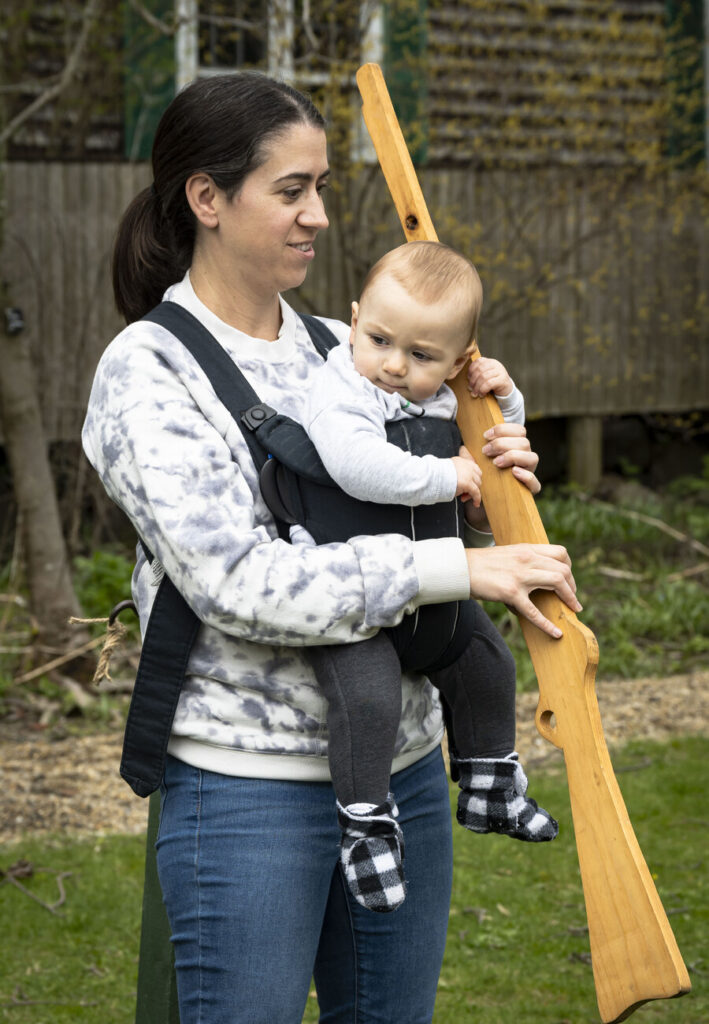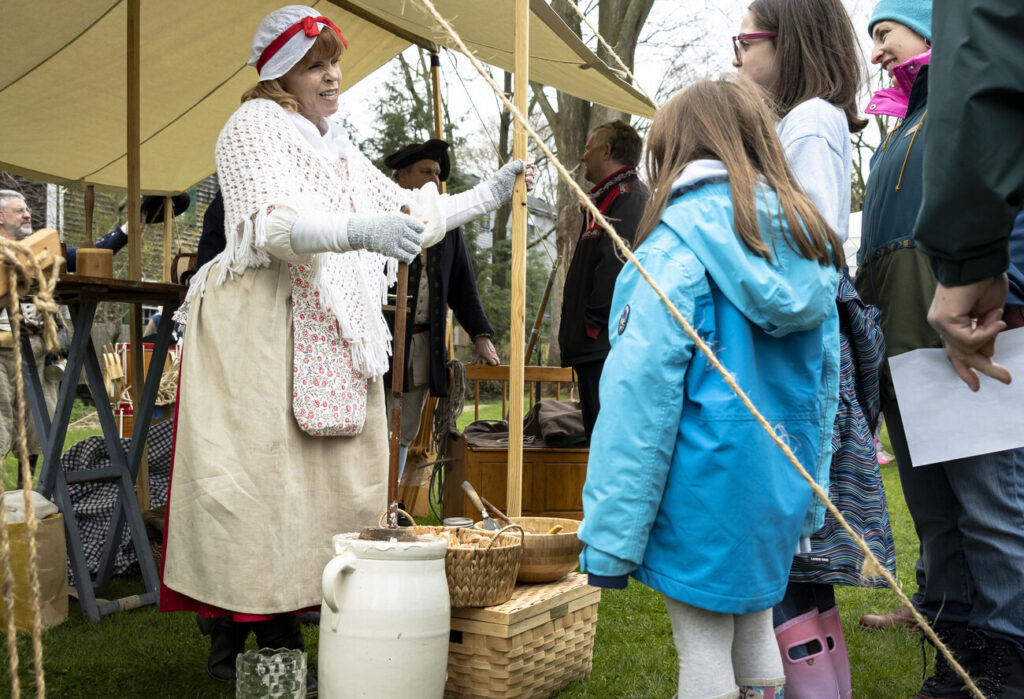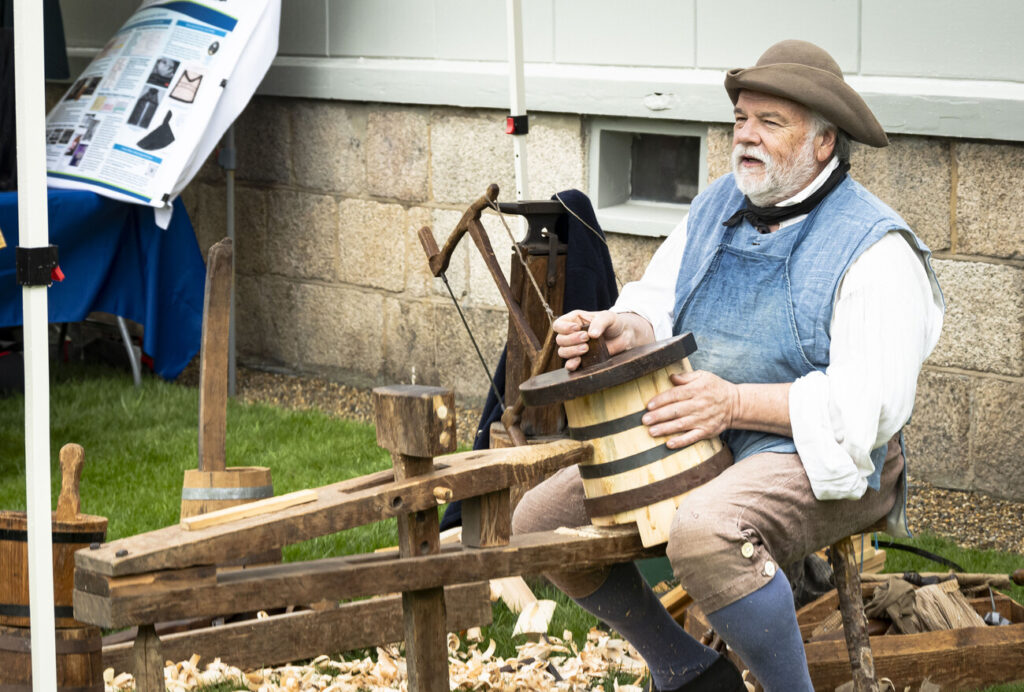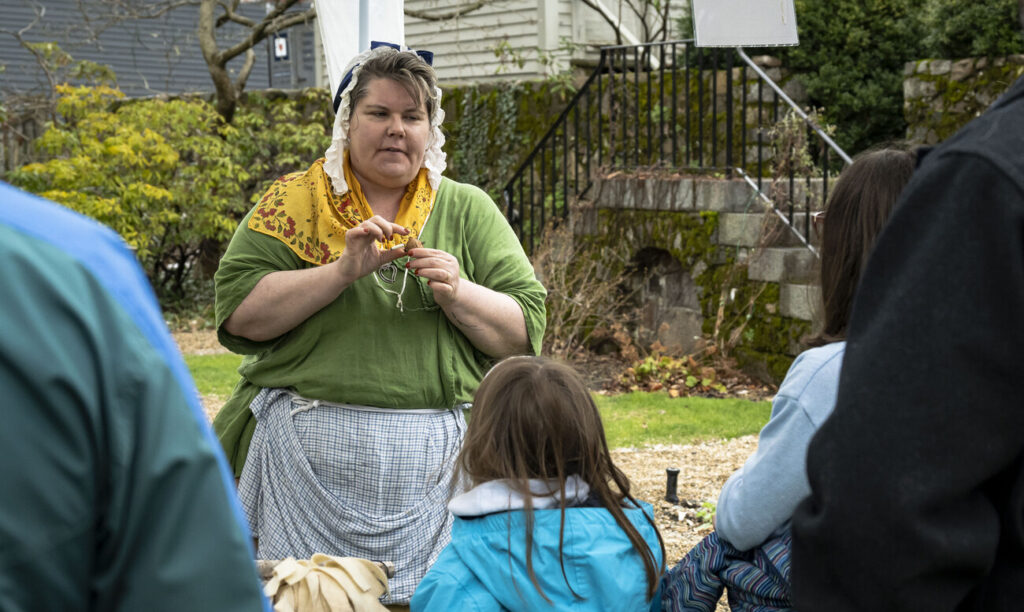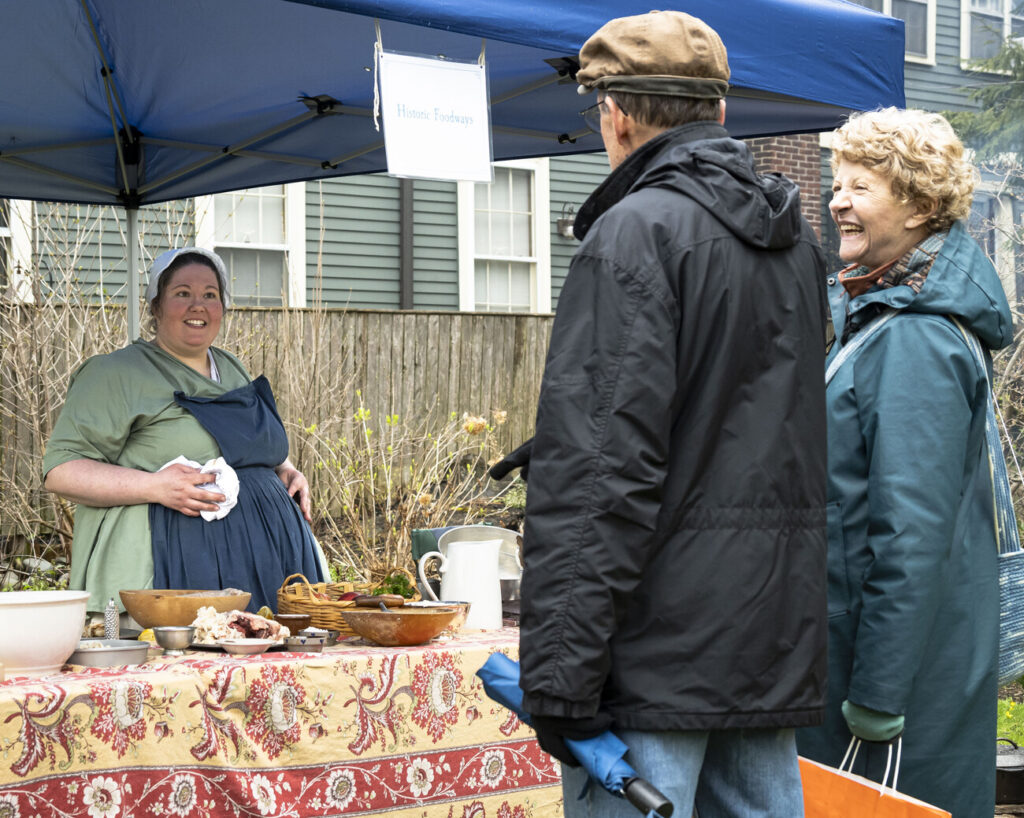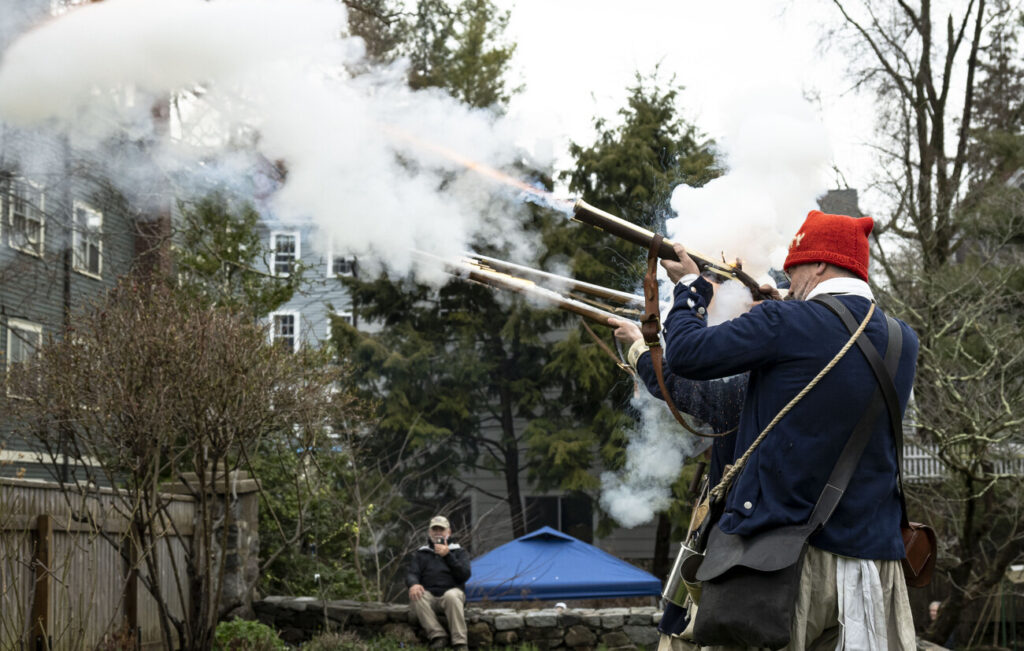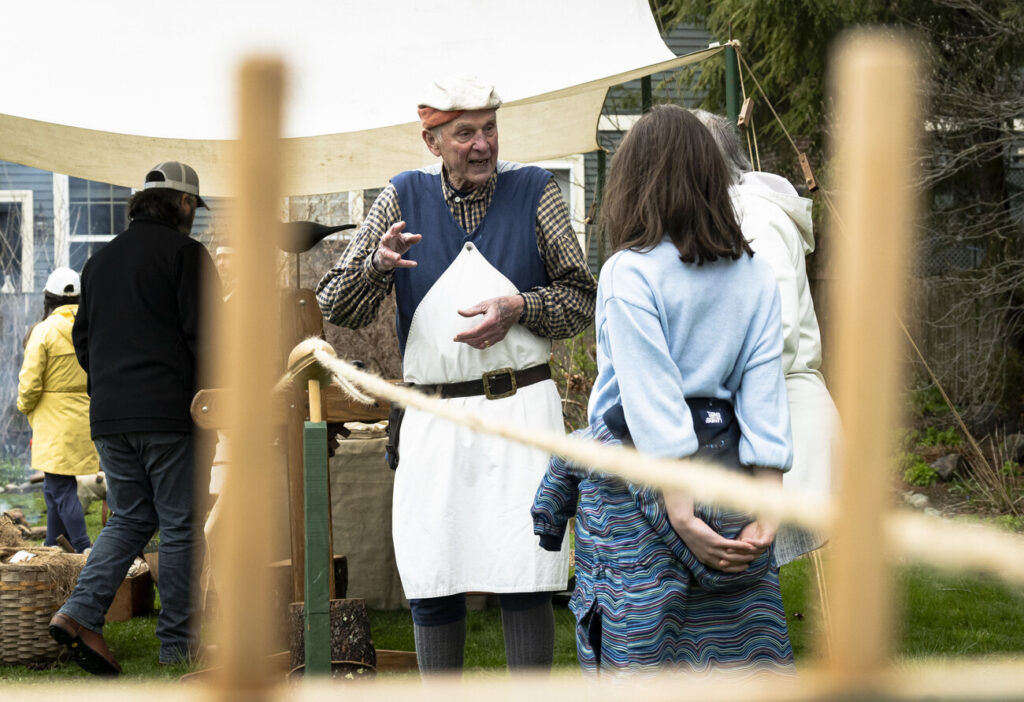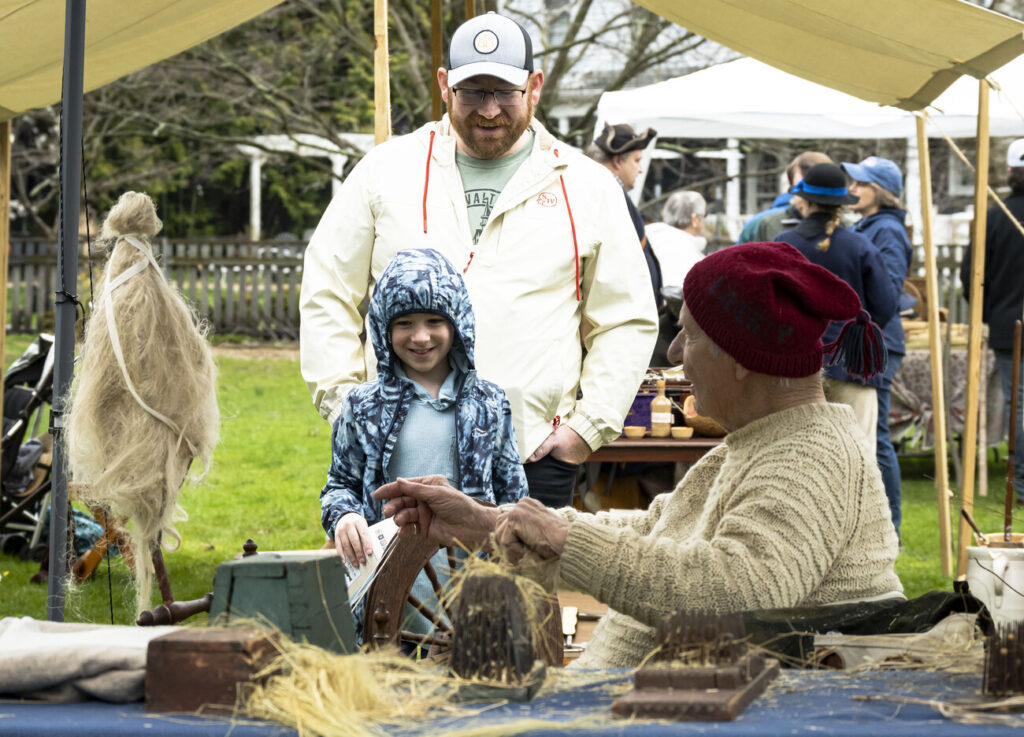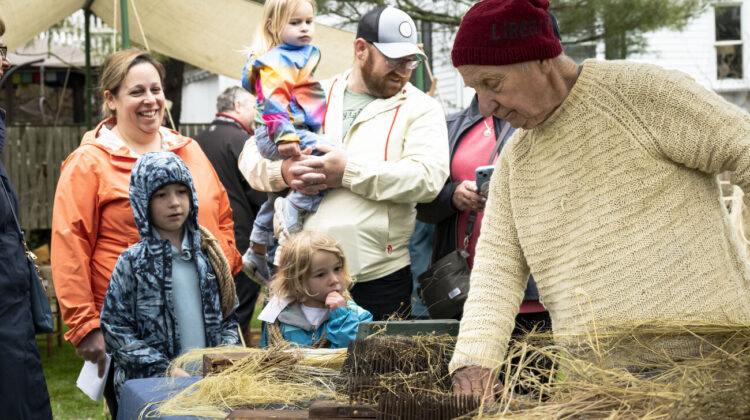Community members were given an opportunity to go back in time Saturday in the Jeremiah Lee Mansion Gardens to see and learn how tools, food, and other items were made in Colonial America as a part of the Marblehead Museum’s first ever Colonial Crafts Fair.
Despite some rainfall, the event was a success as dozens came to see demonstrations ranging from shoemaking, to churning butter, to processing flax. Coordinator of Education and Family Programming for the Museum Melissa Vickers participated in her own demonstration of the Historic FoodWays, showcasing how certain foods were made during the Colonial era.
Vickers said she was happy with the turnout for the inaugural fair.
“It seemed like the town and the surrounding communities just kind of flocked to it,” Vickers said. “We were very, very pleased that the community rallied behind the Museum and helped to make it such a good event.”
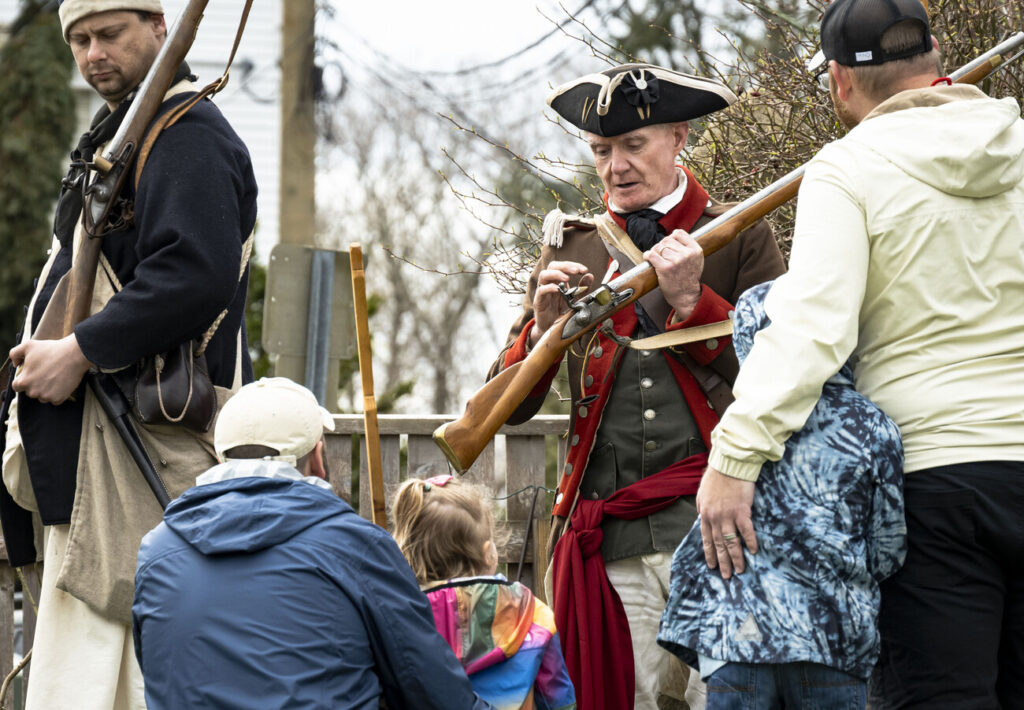
Many of the crafts featured tools and other items that were important to industries in Marblehead at the time, including rope making.
“If you look back at the history of Marblehead being a port town, rope making was very very important,” Vickers said. “There were lots of rope walks.”
One of the demonstrators, Bill Wesson, setup and crafted a 60-foot rope walk during the fair.
From broom making, to leathersmiths, and even a Paul Revere copper print engraving and printing station, Vickers said the event helped conceptualize Colonial life for those wishing to learn about the era.
“It’s really kind of that throwback so that people today can get this more tangible glimpse into the past,” she said.
Vickers added that all of the skills featured were integral to not only Marblehead, but the entire North Shore, and it’s important to be able to “preserve” those skills.
“It’s one thing to read about something but when you can actually see it happening and see and feel and have this multisensory experience, it really brings that home a little bit better,” Vickers said.
Vickers said that the hope is to have the event return next year, with the goal of passing the skills along and “spark an interest in the newer generations to prolong the lives of these skills that the artisans are portraying.”
